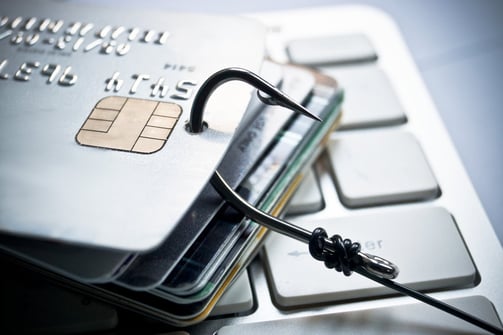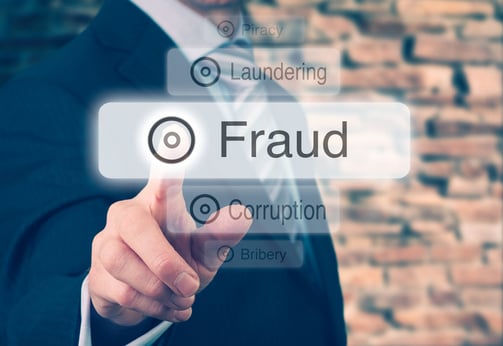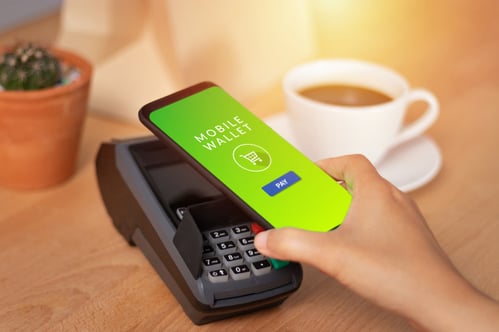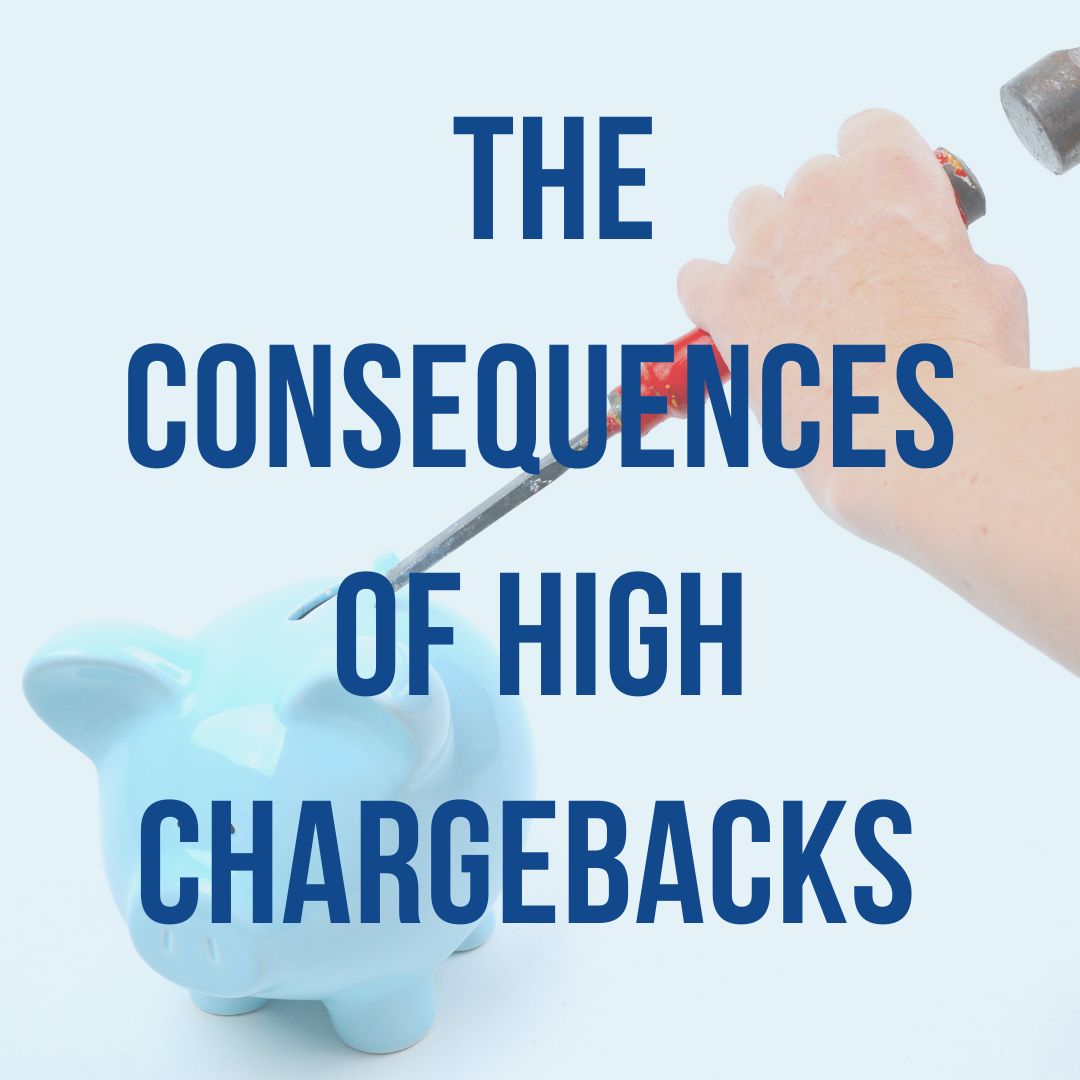News Flash! Fraud is on the rise! And it's not just the criminals anymore.
 Over the last 2 years, we’ve seen an unprecedented increase in retail eCommerce sales. We've also experienced a significant pandemic-induced increase in mobile/digital wallet adoption.
Over the last 2 years, we’ve seen an unprecedented increase in retail eCommerce sales. We've also experienced a significant pandemic-induced increase in mobile/digital wallet adoption.
And if there’s one thing we know to be true, it's that where the money goes, so goes the criminal. We’ve seen a drastic increase in retail and eCommerce fraud overall. But fraud on mobile channels is increasing just as drastically.
Fraud is increasing, becoming more complex, and affecting all commerce channels.
To say that cybercrime is on the rise would be an understatement. Online fraud and cybercrime have skyrocketed in the last 2 years. And the attempts continue to get more sophisticated. But 2021 numbers are proving to be even greater than records from during the height of the pandemic in 2020.
Ecommerce spending numbers from 2021 continue to show a drastic increase in online sales. 2021 retail ecommerce sales were 60.4% higher than the pre-pandemic sales numbers from 2019. And with those increases also comes an increase in fraud attempts and successful fraud across all channels.
The LexisNexis 2021 “The True Cost Of Fraud Study” findings show “a significant increase in both the cost and volume of fraud”. Not only is fraud increasing, but how much merchants lose to fraud is increasing, up 15% from the 2019 study. For every $1 of fraud, it costs merchants $3.60 in fees and losses.
But probably one of the most concerning findings is how much mobile channels contribute to fraud. The study found that in the U.S. 39% of total fraud costs can be attributed to mobile channels.
And it's only going to get worse. Tools and software to commit cybercrime are becoming increasingly easier to get ahold of. And that access has only served to lower the barrier of entry to cybercrime and open the door for more criminals.
Traditionally, data breach has been the most effective way for criminals to get ahold of the credentials and card information needed. But now, it's not so much that card information is “stolen”, it's discovered. Cybercriminals are putting sophisticated software algorithms to work to gain credit card information. Criminals are now acquiring account information through systematically running through number combinations until they get the right ones. It may seem like a move backwards, but sophisticated software helps make for easy work.
Another issue is how merchants think about different aspects of business. Many merchants look at their Payment Processing and fraud prevention as two different aspects of business. When in truth, these things are inextricable.
Singular fraud detection is no longer enough to derail today’s fraudsters.
Fraudsters are becoming more sophisticated and that means their methods are well thought out and complex. We can no longer try to fight fraud when it happens, which is usually at the time of transaction.
We have to focus on preventing the option for fraud from the very beginning of the customer journey. Fraud prevention and detection should be monitored from the moment the shoppers device connects to the site. And at the customer log-in and account creation. At these points, machine learning can detect whether it's a human or a bot.
That way, we successfully implement prevention tactics at each touchpoint along the customer journey. And these early potential fraud signals can help fraud prevention software catch anomalies at a much earlier time than during the payment transaction and flag the purchase.
It's safe to say that fraud prevention and cybersecurity must be an integral part of every company’s strategy. Merchants must employ industry Best Practices for eCommerce and customer management. They’ll need to commit to a multi-layered fraud detection and prevention approach. And they must invest in solutions that are integrated completely with both cybersecurity and digital experience operations. And if they can do this, it can pay off big time. Imagine experiencing a 71% decrease in successful fraud attacks and reducing your overall cost of fraud.
Another type of fraud, called armchair fraud or friendly fraud, is also on the rise.
Unfortunately, it's not just criminals that are capitalizing on fraud. Stats are also showing significant increases in friendly fraud abuse. 80% of retailers interviewed said they’ve seen an increase in both refund fraud and chargebacks during the pandemic. The National Retail Association reported refund fraud alone cost merchants more than $25 billion in 2020.
With huge increases in online shopping and home deliveries, it's not that surprising there would be an increase in returns, refunds, and even chargebacks. But the sheer number of incidences show that consumers have learned to take advantage of retailers. Consumers have learned that they can claim an item was delivered damaged or not delivered at all with no proof. Many retailers don't even ask for the damaged time to be returned. This has made it very easy for consumers to obtain items, file a chargeback or request refund, and get their money back. No questions asked.
It’s not just true fraud and criminals that businesses need to worry about anymore. Businesses now need to recognize that this “armchair” fraud is a real threat to business and must be a priority.
Digital and mobile wallets contribute to the ease of friendly chargeback fraud.
 The increased use of digital wallets has only added to this problem for businesses. Digital wallet providers have given customers yet another avenue for charging back a transaction. Usually, a customer would need to file a chargeback with their card issuing bank to fight a fraudulent charge on their credit card. Or if a customer was unhappy, or did not receive a product, they could request a refund through this chargeback option with their card company. But now customers have a second option for getting their money back after using a digital wallet to pay.
The increased use of digital wallets has only added to this problem for businesses. Digital wallet providers have given customers yet another avenue for charging back a transaction. Usually, a customer would need to file a chargeback with their card issuing bank to fight a fraudulent charge on their credit card. Or if a customer was unhappy, or did not receive a product, they could request a refund through this chargeback option with their card company. But now customers have a second option for getting their money back after using a digital wallet to pay.
Digital wallet providers such as PayPal, ApplePay, and SamsungPay also offer the ability to file a chargeback on a purchase using their wallet.These customer protections give the purchaser one more easy avenue to file a dispute for a charge.
But that only makes it harder on the merchant, as if fighting one avenue of chargebacks wasn't hard enough. Not only are merchants getting more chargebacks, but digital wallet chargebacks are much harder to fight. Primarily, this is due to the same reason they are more secure. Much of the customer information during the transaction is hidden, making it harder to prove the customer made the purchase.
But it's also because digital wallet providers have their own rules surrounding chargebacks and disputing them. There are limits on allowed response times. Requirements for providing supporting documents. It all costs time and money. And those rules can vary greatly between providers. But they will also vary greatly from card issuer rules you're already familiar with. It can be a lot to keep up with. And you may not have access to the type of information and records needed to prove the purchase and win the fight.
Mitigation strategies must rival marketing strategies
Merchants must find more productive ways to both fight and prevent non-legitimate customer chargebacks and refunds.
Consumer habits are changing along with the digital payments landscape. Consumers want convenience and are ripe to adopt new technologies. Consumers expect to be able to pay however they want, but they also demand an experience that is seamless and frictionless. Business owners have to find ways to balance fraud prevention techniques with a friction-free customer experience. 
Luckily, all of the traditional ways to fight fraud and chargebacks still apply. But merchants need to make them a priority and move their efforts to the forefront of their business strategy. Ultimately, merchants need to realize that they can no longer do it alone.
Fortunately, companies in the fraud prevention sector recognize this. More than ever, cybersecurity specialists come together to collaborate on the best ways to fight fraud. They are working together to create solutions that are flexible and scalable to work for businesses of all types and sizes.
In our next article, we’ll dive deeper into ways to prevent and fight chargeback fraud. We’ll talk about how to tighten refund policies without creating a lot of extra friction for your loyal customers. And we’ll break down the specifics of chargebacks through digital and mobile wallet providers.
If you're interested in learning more about fraud prevention and/or chargeback management software, call now. All our payment advisors are ETA Certified and well educated in the best solutions available today.
At MonerePay, providing payment solutions is about more than just offering you a way to accept payments. Accepting payments touches almost every aspect of your business. That’s why we cater each Payment Processing solution specifically to the customer to support their individual success. Our unique payments solution, along with our intuitive gateway and Enterprise Business Intelligence Reporting, combine for insight into every aspect that your payments touch.
To find out more, click the button below.

(1).jpg)


.jpg)
